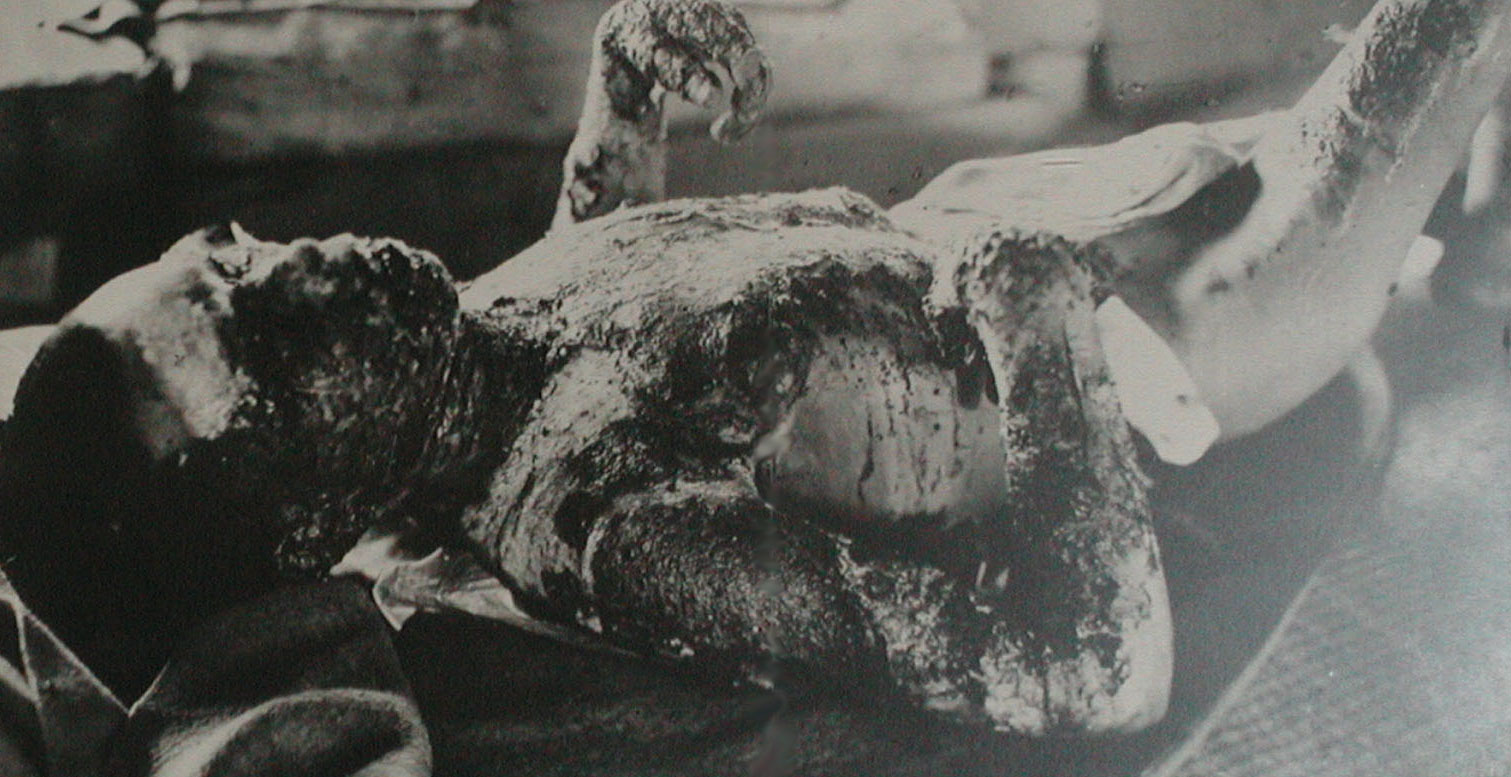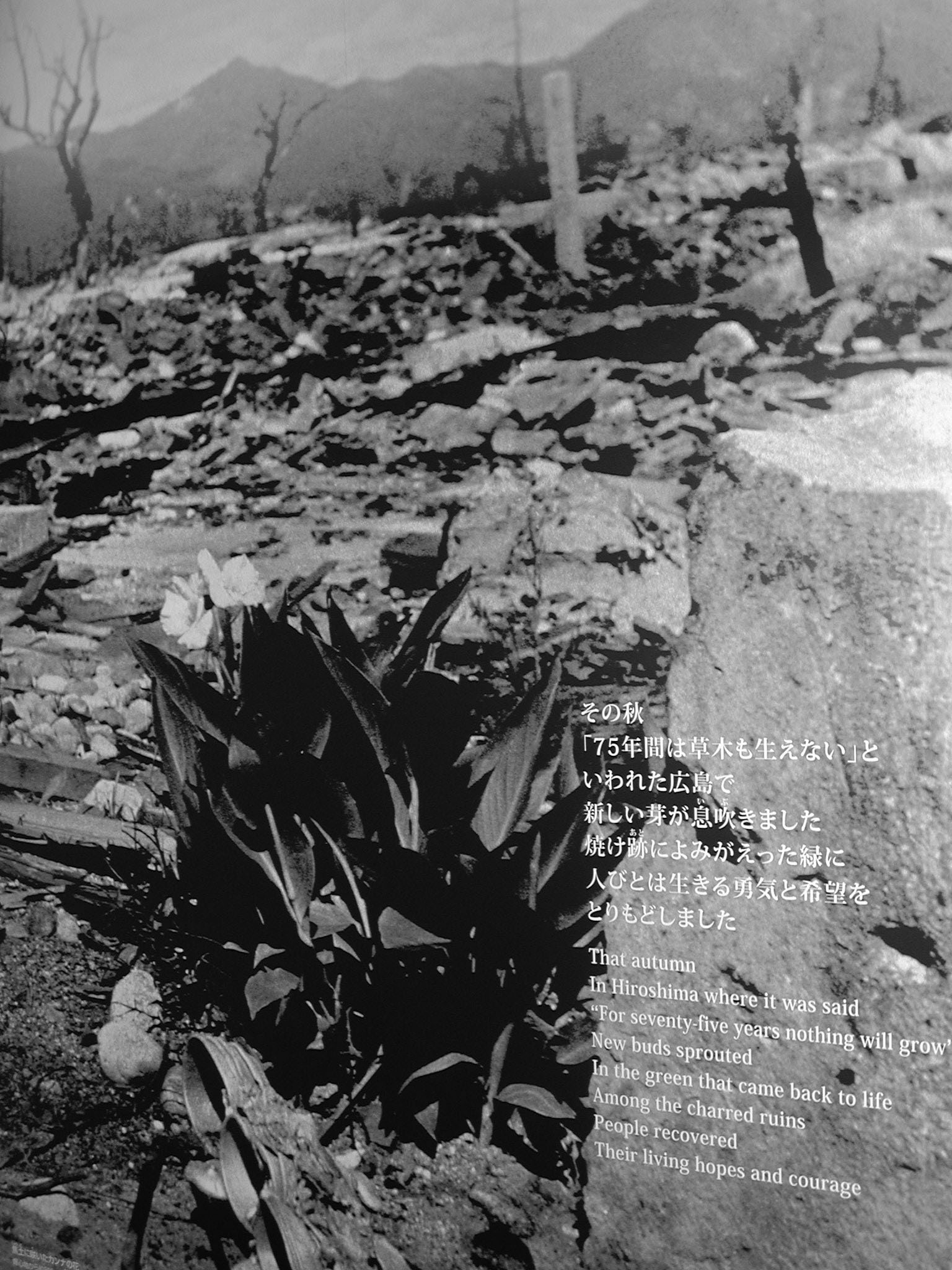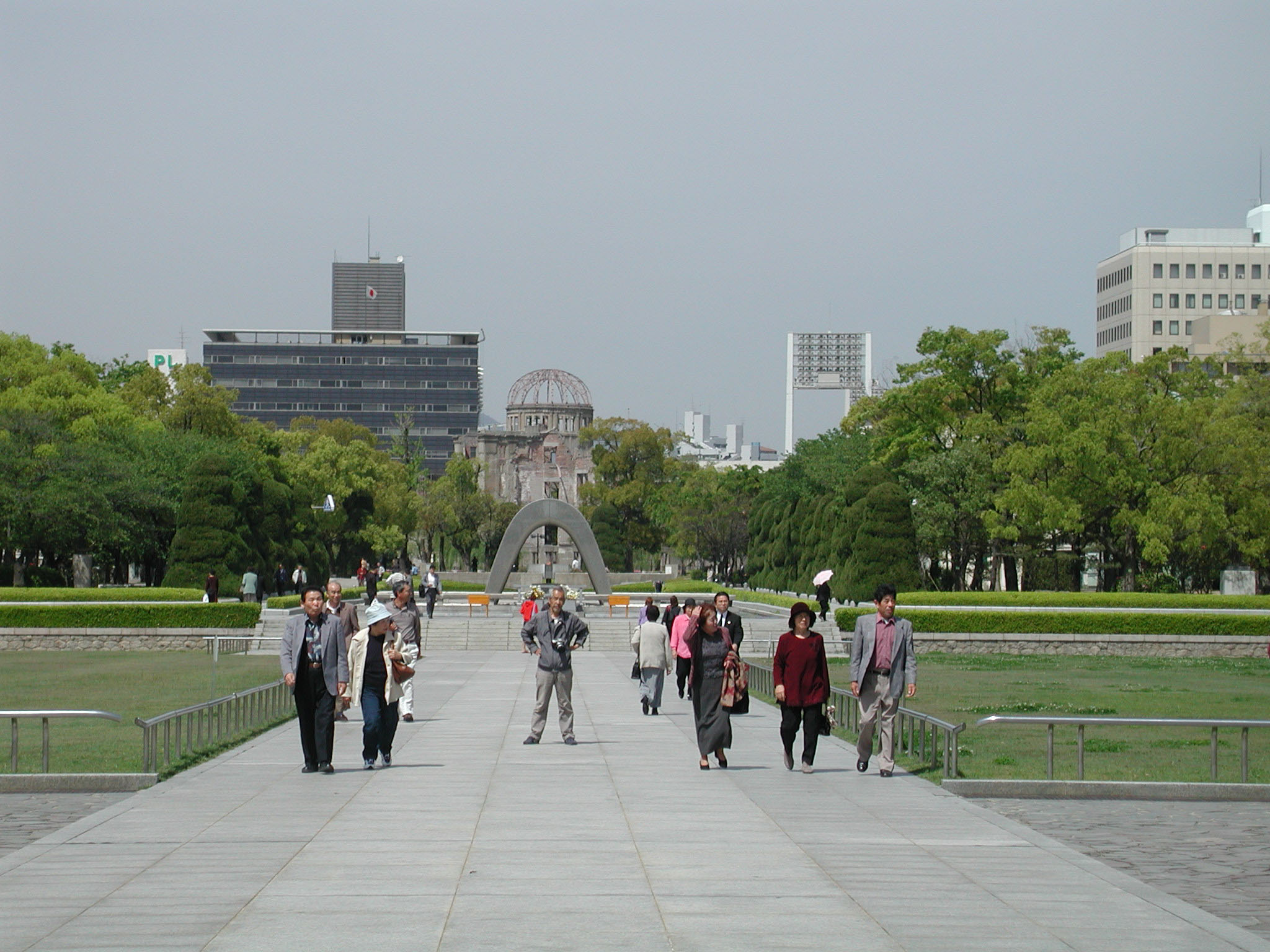Introductory
speech
of the President of EFN in
Hiroshima, Japan
at the Hiroshima Prefectural
Medical Association
on April 19th
2002

Photo of a deadly burnt victim taken in Hiroshima on August 7th,
1945,
this young man was located at the moment of the explosion on an
island 3000 meters from the hypocenter.
Source : Hiroshima Peace Memorial Museum.
This should never happen
again

A few weeks after the atomic bomb devastated Hiroshima, grass
started growing again and flowers blossomed, giving some hope to the
survivors of Hiroshima that the city could be inhabited again.
Source : Hiroshima Peace Memorial Museum.

The city of Hiroshima today (©EFN, April 2002).

The Hiroshima A-Bomb Memorial and Memorial Dome : humanity should
never forget (©EFN, April 2002).
See
other photos
First of all, I would like to underline that I am
very honored and extremely impressed to be here in today in Hiroshima
where such a dramatic event has occured on August 6th,
1945.
I address my most heartfelt emotions to the
survivors and the members of the families of the victims of this
horrible event (several of which were assisting to the lecture). I am
deeply moved to be in this city which is such an important symbol.
This visit is also very important for me to better understand the
terrible and devastating effects of atomic bombs.
I would particularly like to thank for inviting me
to Hiroshima and making tonight's presentation possible :
- Dr Hiroo Dohy, Vice-Director of the Hiroshima
Red Cross Hospital and Atomic A-bomb Survivors Hospital, for his
kindness, his warm welcome, and the special visit for us this morning
of the Hiroshima Hospital and laboratory dedicated to the treatment
and the study of the survivors of the A-bomb
- Dr Kouzou Sanada, President of the Hiroshima
Medical Association, for his kind invitation and the organization of
this conference
- Mr Minoru Hataguchi, Director of the Hiroshima
Peace Memorial Museum, for his special visit of the Hiroshima Peace
Memorial Museum this afternoon, and his kind and precise answers to
my many questions
- Mrs Sachiyo Oki, Director of the Office of
International Exchange of the Hiroshima Medical Association, for her
explanations during the visit of the city and of the Hiroshima
Museum, and for her translation of this conference to and from
Japanese
- Mr Mori and Dr Akimoto, survivors of the
Hiroshima A-bomb, for making this meeting possible.
Before starting the presentation about the
civilian applications and general considerations about nuclear
energy, I express sincerely my profound emotion for being here in
Hiroshima with you today. Hiroshima is a very unique and highly
symbolic place in the history of humanity.
We must put all our efforts to act for a better
and peaceful world in the future, and that such a dramatic event as
the Hiroshima A-Bomb on August 6th, 1945, never happens again. Our
association (EFN) is dedicated to prevent such events and to
contribute to better information of the public on matters regarding
energy, health, and the environment, and we are also, of course,
totally opposed to any military applications of nuclear energy
(nuclear war).
I was very impressed by today 's visit of the
Museum and Hospital of Hiroshima.
Nuclear science should be applied only and
strictly for peaceful applications, at the service of humankind, not
for mass destruction.
Bruno Comby
President of EFN
Click
here to download the entire presentation given by the President of
EFN in Hiroshima (7.6 MO Powerpoint presentation in
English).
Click
here to see the photos of the visit of EFN in the city of Hiroshima,
and photos of the Memorial, of the A-Bomb, of the Survivor's
Hospital, to better understand this
tragedy.



